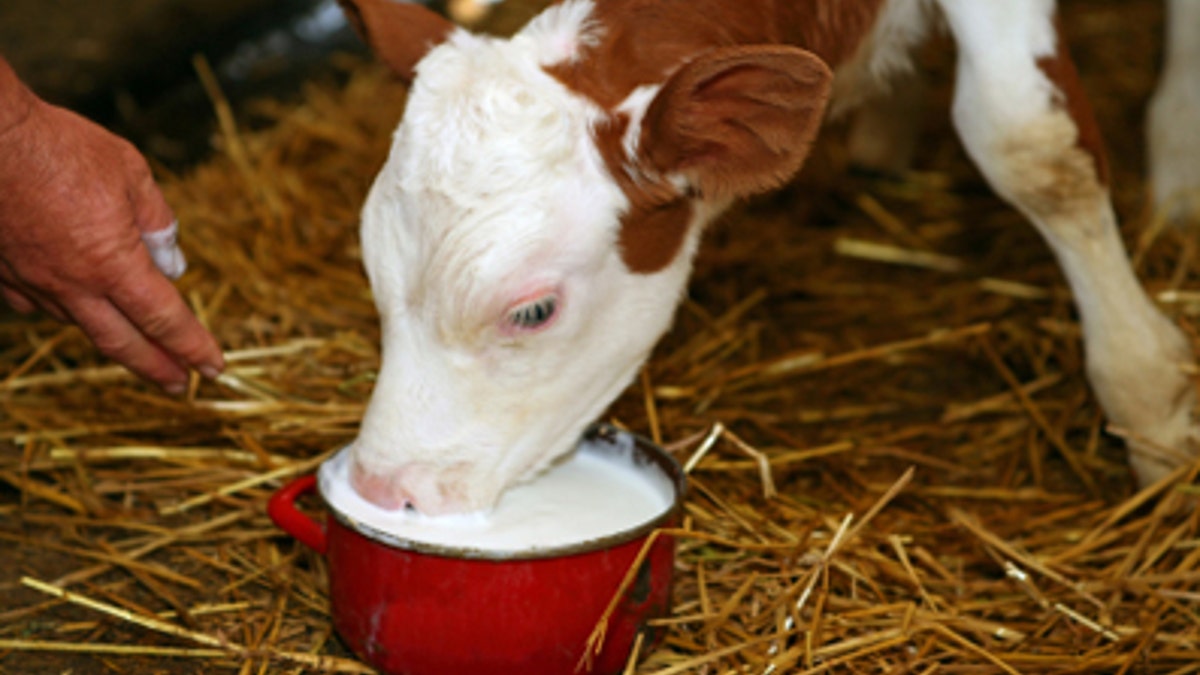
The recent re-emergence of raw, unpasteurized milk into Americans’ diet could potentially do one of two things. It could reintroduce “nature’s perfect food” to a new generation. Or it could bring back the bad old days when drinking a glass of raw milk was like playing Russian roulette at breakfast.
Raw milk was often caused outbreaks of various diseases before it began to be routinely pasteurized in the 1920s. “I’m concerned about what makes peoples sick,” says the CDC’s Robert Tauxe, M.D., Deputy Director of the Division of Foodborne, Waterborne and Environmental Diseases. Simply put he says, “We know it makes people sick.”
Not so, says “Real Food and Real Food for Babies” author, Nina Planck, former director of Greenmarket, the largest group of farmers’ markets in the US. Raw milk is safe providing you find a scrupulously clean dairy, says Planck. “Hygiene starts in the dairy. You have to get to know the farmer. You want a farmer who drinks his own product.” she says. She drank raw milk when she was pregnant and gave it to her children as infants. “I trust the man with the hand on the teat,” says Planck.
Raised on a Virginia farm, Planck sees raw milk as one element of a “traditional food” diet. Traditional in the sense that it consists of foods eaten for thousands of years—meat, fish, eggs, whole fats, whole grains, fruits and vegetables—and in the way those foods are raised and prepared. It’s the anti-processed food diet. Industrial food by contrast is under great pressure to be novel and reinvent, says Planck, pointing to things like sweeteners, trans fats, margarine, refined sugars and low-fat anything.
Poorly run urban dairies that sprung up during the Industrial Revolution caused outbreaks, she says. Improperly farmed cows fed a diet of whisky mash left over from distilleries, (instead of grass) and milked under filthy conditions produced contaminated milk. “There was a collapse of hygiene,” says Planck. Instead of re-examining and reinstituting traditional farming practices to circumvent deadly pathogens, the government opted for pasteurization.
Tauxe agrees that hygiene starts in the dairy, but points out that raw milk and its potential pathogens has been an issue ever since humans began drinking it about 10,000 years ago. Modern sanitation methods are a far cry from the past but, “perfectly healthy, well-managed cows can pass tests and bacteria can still be present their milk,” he says. Bacteria like campylobacter, E. coli O157and salmonella can exist inside udders without animals experiencing pain or showing symptoms, he says. Scrupulous cleanliness won’t guarantee safety, either, he says. Cows can get contaminated from contact with wild animals or birds. Pasteurizing kills pathogens, he says.
It kills pathogens but it also destroys raw milk’s perfect, fragile and complex balance of heat-sensitive enzymes, probiotics, proteins, fats and carbohydrates which have tremendous health benefits say supporters. Pasteurization is like throwing the baby out with the bathwater. Tauxe says he has yet to see the final study that confirms raw milk’s health benefits. Pasteurized milk still contains beneficial enzymes and proteins, he says, plus, you’ll live to drink another glass. Planck says gently-pasteurized, unhomogenized milk is an acceptable compromise.
In a larger context, raw milk advocates say people are healthier when they have access to food raised the way it’s supposed to be raised. Choosing raw milk for them is a consumer rights and personal choice issue. They also see it as a matter of economic freedom for farmers who can eliminate the middleman. Some of that may well be true, but Tauxe points out that some pathogens are serious enough to cause renal failure in children. To him, raw milk is not an issue of personal choice, but one of public health.
Click here for more from FoxNews.com Food and Drink
Despite these concerns consumption is on the rise, not just of raw milk but of cultured foods made from it—cheeses, crème fraiche, sour cream, kefir, and yogurt. Many feel that raw milk creates superior dairy products and more nuanced and more complex cheeses. It does. Unfortunately, Tauxe says, they carry the same risks.
At the end of the day there are vital lessons to be re-examined if not re-learned from thousands of years of traditional agriculture practices and animal husbandry. Unlike cows, humans are lucky enough to be able to glean from the past while avoiding some its bigger pitfalls. If you’re in one of the thirty-nine states in which you can legally obtain raw milk, you can choose. Responsibility, says Planck, lies with each individual.
